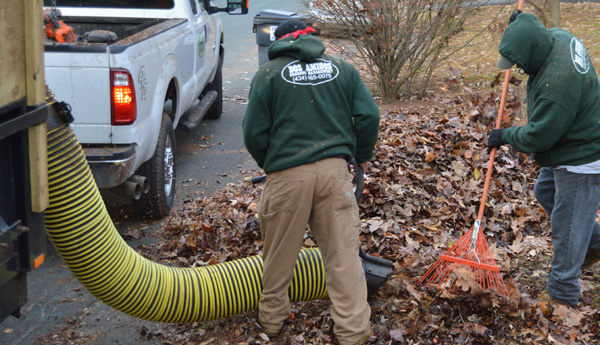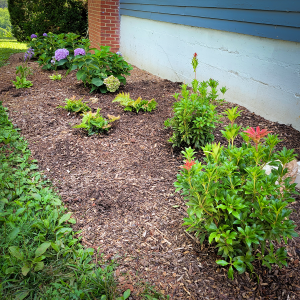We all liked to jump into large piles of leaves as children. However, now that we are homeowners we have the added responsibility of keeping our yards in check. Each fall, mother nature covers our lawn with leaves and there are a number of ways to deal with those fallen leaves.

Turn Those Leaves into Mulch…
Many lawn mowers have a mulching option whereas the mower can chop the leaves into much smaller pieces and most of the leaf matter will disappear into the turf. Mulched leaves are a great natural way to feed your lawn provided the leaves are not too thick and choking out the turf by disrupting light, water and nutrients from getting into your lawn. Many homeowners also use the mulched leaves around their plants to help feed and protect shrubs, etc. But, be aware that many types of leaves are high in acid and may not be that beneficial.
Remove the Leaves
As mentioned, your lawn needs light, water and nutrients to survive and hopefully thrive. If there is a blanket of leaves on your lawn, it is likely that your turf is missing the benefits of light, moisture and any nutrients available. Lawns can show these signs of stress by developing brown spots, bare spots and grass blades that are more yellow than green. It is important to remove any leaves that come from trees with insect infestations or diseases. Leaves that are infected by insects and disease can ultimately create more problems down the road if they are allowed to stay on the turf.
Some of the more common issues that leaves left on your lawn could cause are brown patch and snow mold. In addition, the leaves left on the lawn will likely slow down or eliminate germination of new grass in the late winter and early spring making the appearance of your lawn less than desirable for the summer months.
Leaves Rain on the Parade of Cool-Season Grasses
Most lawns in Virginia are made up of one or more cool-season grasses. “Cool-season grasses” are so called because they are most active during those periods of the year when the weather is moderately cool. Fall is one of those times. Blessed with enough sunlight, nutrients and water, and enjoying temperatures that are neither too cold nor too hot, cool-season grasses such as a high-quality Fescue or Kentucky bluegrass revitalize themselves in the fall. This is when they must “make hay,” strengthening their root systems and that is why fall is the ideal time to aerate and overseed cool-season lawns.
But a thick layer of fallen leaves can get in the way of the growth of these grasses. Why? Because, for one thing, the leaves can deprive the grass of one of the key elements just mentioned: sunlight. If not raked up or removed in a timely fashion, a thick and/or matted layer of fallen leaves casts too much shade over the grass below.
In summary…
Most disease-free leaves that can be finely mulched ultimately create a great nutrient base (in time, becoming compost) for your lawn and plants. However, for the long-term benefit of your lawn, mulching or removing these leaves will help your lawn year around.


